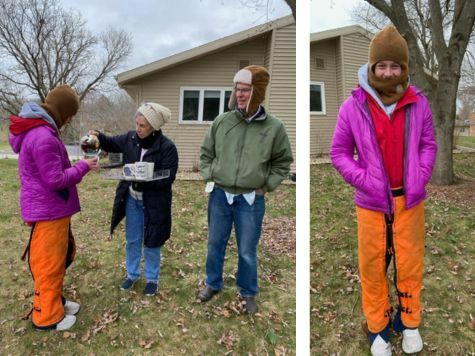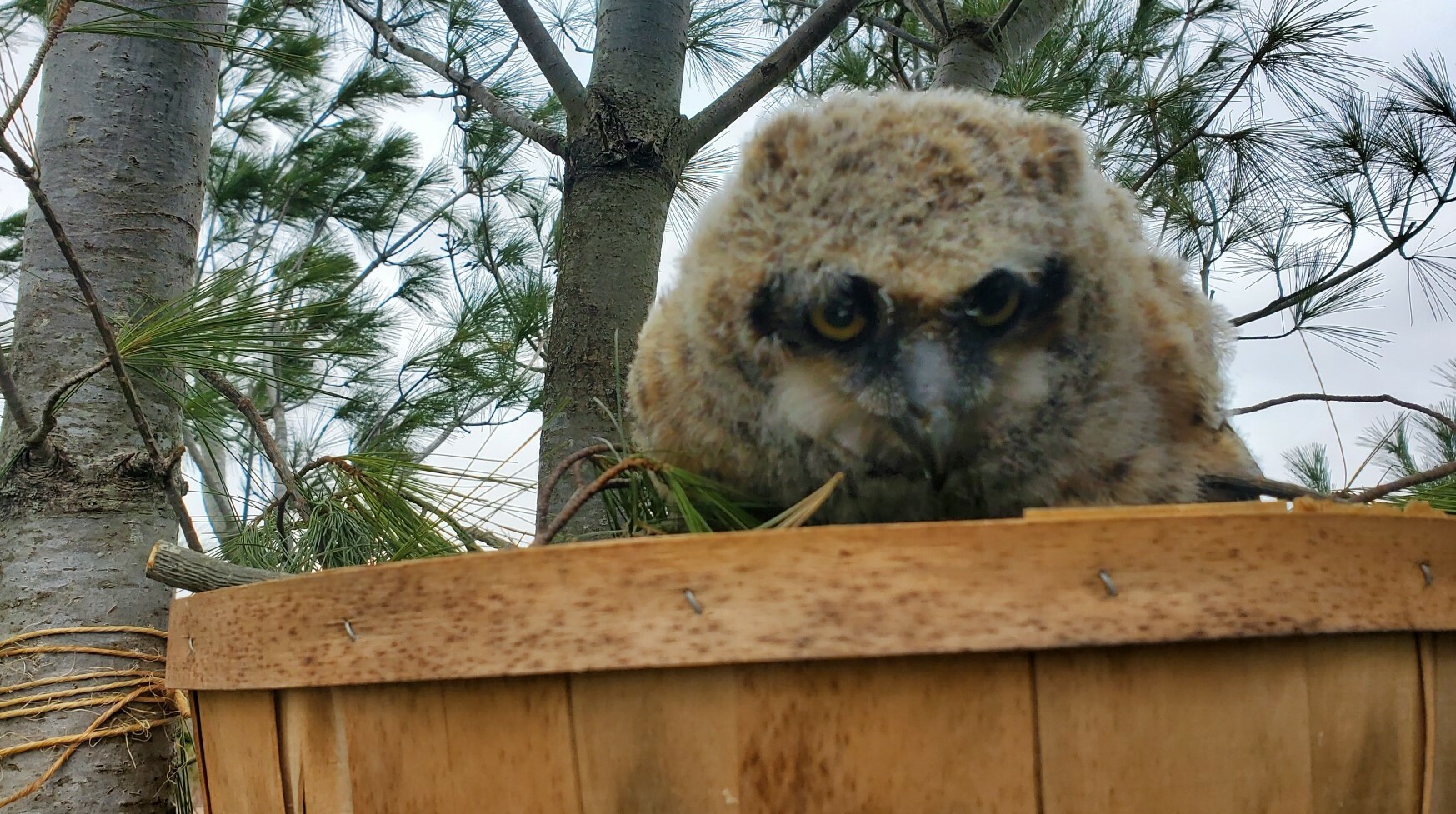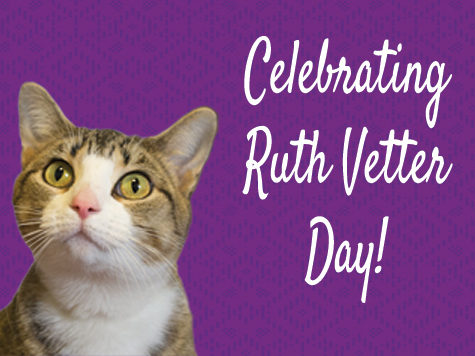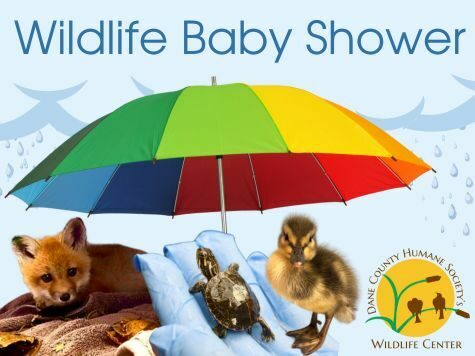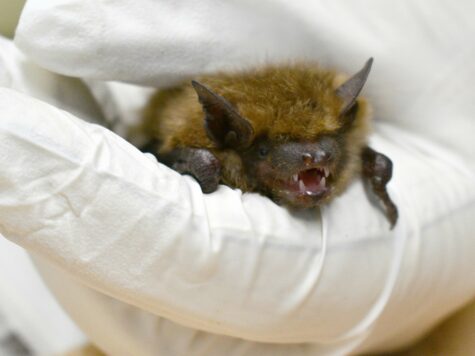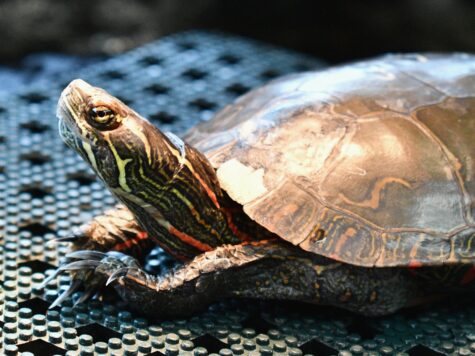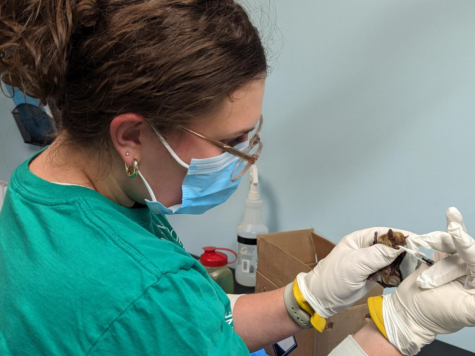Wildlife rehabilitators begin the new year on January 1st much like everyone else: evaluating their challenges and accomplishments, updating goals, and experiencing the feeling of a fresh start. However, unlike everyone else, many rehabilitators also use that date as a significant marker for tracking annual patient numbers, or the total count of sick, injured, and orphaned animals that are brought to a license-holder for treatment during the calendar year. Dane County Humane Society’s Wildlife Center uses a simple system where each animal is labeled with a number that starts with the year (e.g. “24” for 2024) and is then followed by a value beginning with #1 and increases sequentially through December 31st. For example, this year on January 1st, 2024, the first animal to be admitted was a Northern Cardinal, listed as patient #24-0001.
Animals in the Midwest region are typically categorized as year-long residents, semi-partial travelers, or long-distance, migratory species. From January to February, Wisconsin rehabilitators receive fewer admissions because many of our state mammals are hibernating during the colder weather months and neotropical birds have already left for their wintering grounds during the past Fall. Only a few hundred wildlife are taken-in to our facility during that time, but the intake frequency quickly changes between March and April. All of a sudden, Spring is here, and with that comes “baby season” at Dane County Humane Society’s Wildlife Center.
Who are the first babies to arrive in the year? Or, should we say “hoo?” are the first babies to arrive? Nestling owls are almost always the first younglings admitted to DCHS’s Wildlife Center after falling from their nests, with Great Horned Owls hatching first. Many other species follow that, with common earlier babies being red and gray fox kits, Bald Eagle (eaglets), Eastern Screech and Barred owl (owlets), and songbirds like Mourning Doves, Northern Cardinals, and House Finches. The first baby birds admitted for wildlife rehabilitation at DCHS in 2024 were Great Horned Owls #24-0117, 0118, 0149, 0198, 0199, and 0232 – six in total and all requiring expert, critical care after being found on the ground.
Our first two little owlets were so new to the world that they still had eggshell on their feathers. Sadly, one of the birds suffered grievous injuries from falling out of the tree, but the other was unharmed and able to be stabilized after admission. Over the next two days, staff helped to coordinate a few of our dedicated wildlife volunteers and licensed arborists in attempts to put the single sibling back in the original nest, but without success of seeing the parents return to care for their young one. Staff believe the adult owls may have been newer or inexperienced parents, as they were still in the area, but unwilling to come back for unknown reasons. After the second attempt, the owlet was brought back to the Wildlife Center to be kept safe and warm in a specialized incubator while staff members hand-fed them in an attempt to them as healthy as they could. The next morning, staff checked on the tiny owlet and found that it had passed away peacefully overnight, which was heartbreaking for everyone involved. Despite the failure, their story is worth sharing – not only to honor their memory, but also to highlight the extreme efforts that wildlife rehabilitators go through to help their patients and the emotions they have to process when those efforts result in a disappointing outcome.
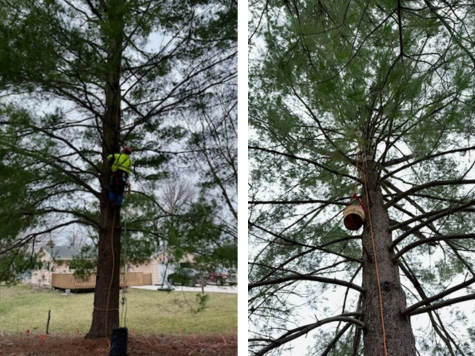
Re-nesting healthy youngsters back to the care of their parents is always the first and best action a licensed rehabilitator can do for those individual animals, as wildlife will survive better in the presence of their own species. Success rates are lower for animals that are found very young and when human intervention is required for those animals to survive. People just aren’t the same role models – they cannot teach wildlife babies appropriate behaviors in the same way that their moms or dads could. In addition, some animals, like birds, are highly susceptible to conditions such as imprinting: a process where they mistakenly identify as the wrong species and act inappropriately towards humans. Using foster animals as companions for young wild animals in rehabilitation can be an intermediary option between re-uniting or providing human-only care, but it also requires having an adult of the same species that is suited for the remainder of its life in captivity and that takes well to caring for a baby that is not their own. If our first hatchling owl of this season had made it through the first few days after admission, then the next best option would have been to find another licensed facility with a foster Great Horned Owl in care that was willing to take the owlet as a transfer. That way, it would have an adult to grow up with, which is better than raising a bird alone or only in the presence of people.
The next three hatchling Great Horned Owls to be admitted to DCHS’s Wildlife Center turned out to be successful, happy cases, and we are so excited to share their stories with our supporters. The first case was a single owlet that fell out of its nest pre-maturely around mid-March and was returned the next day back to the original site. Great Horned Owl #24-0149 was re-nested on one of the chilliest days of the winter season, where night-time temperatures dropped below freezing to around 20 degrees, and there were risks to maintaining the hatchling’s body temperature while waiting for mom to return to the tree. It took over five hours to complete, and the experience of getting this bird back to the care of its parents was both challenging and terrifying, to say the least. It took planning, patience, and commitment from licensed wildlife staff, two certified arborists, one wildlife volunteer, and a new intern, in addition to wonderful, caring members of the public who had found the owlet originally and were willing to assist during the process. If you’ve ever wondered what it’s like, we’ll take you through this story of success where our team braved the cold and saved a baby’s life.
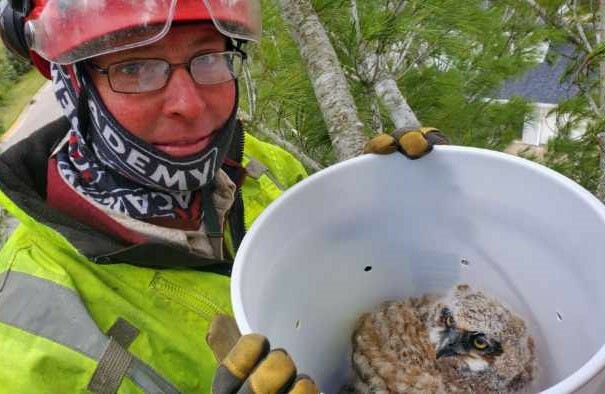
Timeline of Events
March 16th, 2024
12:00 pm: Wildlife Center staff receives a phone call about an owlet on the ground. There were no visible adults in the area when it was rescued, but the finders heard Great Horned Owls vocalizing at night nearby. They had a good idea of where the nest might be located, but it wasn’t obvious or visible in the trees. The 60-foot-tall pine trees were too high to see anything from below. The finders helped our team by marking a set of trees with flagging tape and sending us photos of the surrounding area. Permissions were granted for our team to attempt re-nesting the following day, barring the bird was still healthy.
4:00 pm: The owlet had been safely contained, admitted to the Wildlife Center, and given patient ID #24-0149. Wildlife staff members evaluate the owlet, performing a physical exam and running diagnostic tests. They provide fluid and nutritional support (i.e., tweezer feeding the baby) and house the baby in a warm incubator overnight.
March 17th, 2024
8:00 am: Staff check the weather forecast and talk with the finders again by phone, asking if any adults had been seen the previous night. None were seen, but they were heard hooting again, and a rabbit carcass that was noted on the ground yesterday had magically “disappeared” from the area of trees. This suggested that adults were still in the area.
9:00 am: Wildlife staff contact members of our raptor re-uniting volunteer team and find two arborists, Mike and Jesse, who were willing to participate in getting the baby back to the care of their parents. They choose an afternoon meeting time at a location 45 minutes away from DCHS. The baby receives its morning fluids and feeding and waits for staff to get necessary items together for its transport (it doesn’t really have anything else to do but be an owl and look at itself in a mirror that was provided in the incubator for it to see its reflection in).
1:00 pm: Raptor volunteer, Maarit, arrives at DCHS to collect supplies for re-nesting. This includes a new nest basket and branches that arborists would haul up the tree, therefore giving the parents a sturdy nest alternative from the one that fell apart. She meets wildlife rehabilitation intern, Megan, who gathers the baby, learns how to give another mid-day feeding, and brings monitoring equipment such as binoculars and a standing scope. They leave DCHS together to meet with the arborists at the nest location.
2:30 pm: Mike and Jesse begin repelling one tree, and then another, after finding little evidence of a nest that might have been there in the first place. They work over the next two hours to secure the basket to the second tree that looks to have more support. Maarit and Megan document signs that owls were nesting in the area by locating urates streaked on the pine tree bark, regurgitated pellets on the ground, and bits of carnage from feeding the babies natural prey items such as rabbits and mice. They search for adults in the area, without luck of finding any, and keep the baby warm and safe until it’s ready to be hauled up to the nest.
4:30 pm: The baby is carefully hoisted up to the nest by Mike and Jesse and placed in the new basket. Maarit and Megan use play-back calls of baby Great Horned Owls vocalizing to entice nearby adults to check out what’s happening. They watch from a distance and stay warm in their vehicles while the temperatures drop little by little into the evening hours.
5:30 pm: Our brave and dedicated arborists stay up in the tree as long as they can, but eventually they need to come down due to the cold. They leave one rope in the tree as a back-up in case they had to climb up the tree one last time to bring the owlet down. Jesse plans to return by 7:00 pm if no adults approach the nest, thinking there was a good chance the attempt was unsuccessful. Megan checks in with staff about the progress and returns to the wildlife center with most of the equipment and to help with closing duties.
6:30 pm: Maarit has elected to stay, but contacts staff to ask about swapping places by 7:00 pm. No adult owls had been seen, and it was getting too cold to safely leave the baby owlet much longer. She contacted staff saying: “Hey, it’s Marrit. Would you want to start heading this way to meet Jesse at 7:00 pm? I’ve not seen or heard the parents yet, but I’ve been playing the sounds/begging calls multiple times on several occasions in between sitting (warming up) in my car, watching. No other birds are alarming either to indicate that an owl is close.” Staff member, Jackie, hops in her car and starts driving away from DCHS, ready to retrieve the baby and bring it back to the Wildlife Center to stay overnight. It seems to be a failed re-nesting and all parties are feeling sad.
6:40 pm: Maarit calls Jackie just as she’s about to turn onto the highway and says “THE PARENTS! JACKIE, THERE’S AN OWL IN A NEARBY TREE!!” Jackie stops the car, turns around, returns to DCHS, and waits for Maarit to send a picture to help verify that indeed, things are starting to go right! The night concludes with a series of promising text messages and photos that confirmed the parent owls had found their baby.
March 18th, 2024
Our success continues when the finders checked on the nest again. They had seen mom in the morning. All was well.
Jackie Sandberg is the Wildlife Program Manager at DCHS's Wildlife Center.
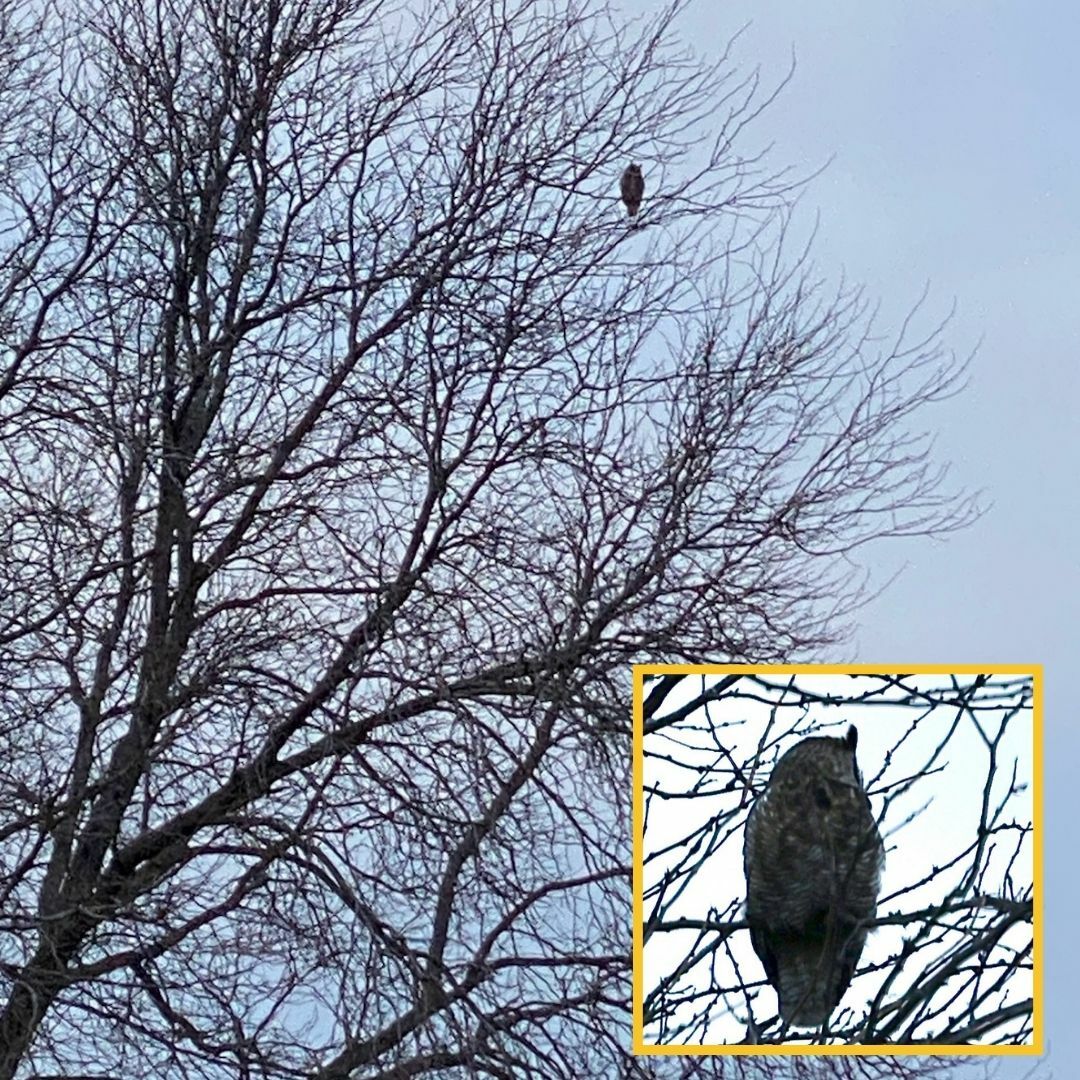
Helping People Help Animals. What was the Impact?
Wildlife Rehabilitation Intern Megan Moskal shares in her own words what impact participating in the re-nesting of this owlet has had on her as a Spring intern at our Wildlife Center:
“A few weeks ago, I had the amazing opportunity to travel to participate in the re-nesting of a juvenile Great Horned Owl. Despite the frigid weather, I was warmed with excitement. This young owl had fallen from its nest due to strong winds. When we arrived, we were instantly greeted by the finders, and they appeared equally (if not more) excited than I was for this owl to return to its parents. As with any re-nesting, there is a risk that we would be unsuccessful. Yet, two arborists, the two finders, and a DCHS volunteer, along with myself, came together, determined to reunite this family. From the start, I was inspired by the group that clearly cared so much about wildlife. The entire event took over five hours of hard work. After the arborists climbed a few trees, they were able to identify the remains of a nest. We carefully constructed a new, safer nest for the little owlet and sent him on his way up. What followed was a long waiting period for the anticipated return of the parents. Late that evening, when I heard the news that they had landed on the nest, I was overjoyed.
To experience this success means so much to me, as it represents how much a dedicated community can do for wildlife and our environment. As I have already learned many times in the short period I have been involved in this community, our efforts matter. When like-minded individuals join together to make an effort, we can truly make a difference in protecting the animals that preserve nature and the circle of life on this planet. This journey is one I will remember for years to come. I know I will experience similar feelings in the remaining tenure of my internship, and I can’t wait to see the success we can create.”
